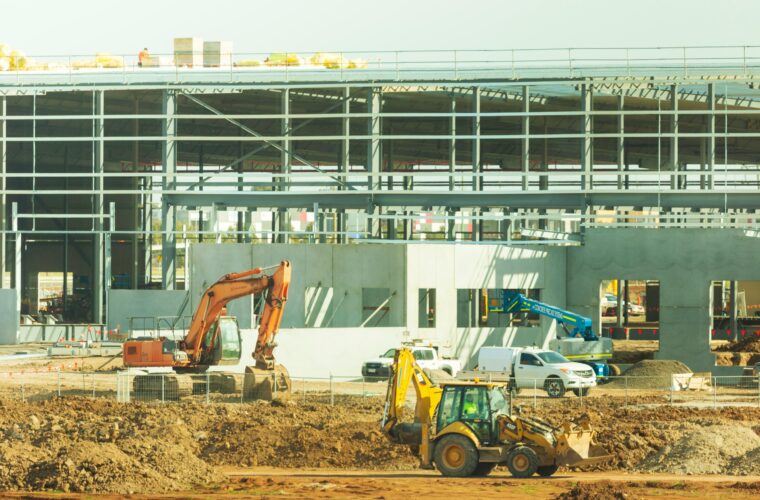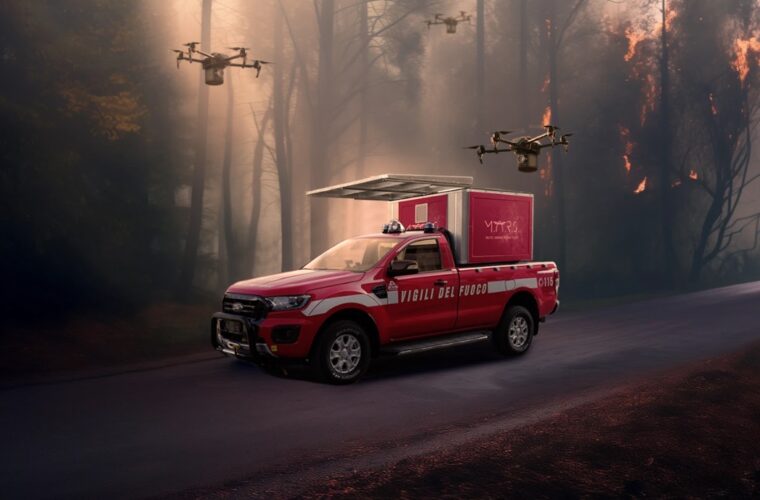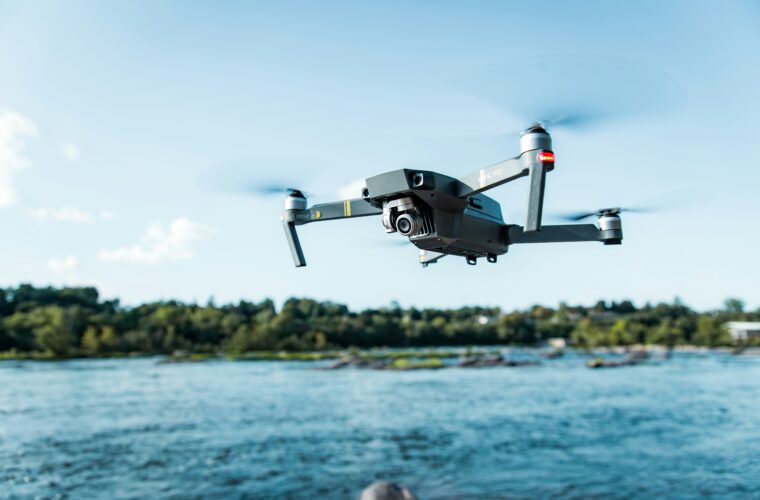In an era where technology continues to reshape the landscape of global retail, IKEA is stepping forward as a leader in innovation. The Swedish furniture giant is taking significant strides by deploying AI-powered drones in its distribution centres, marking a pivotal shift in managing inventory. This technological advancement not only aims to streamline IKEA’s operations but also enhances the workplace experience for its employees, demonstrating a thoughtful integration of automation with human collaboration.
The evolution of IKEA’s drone technology
The journey began in 2021 when IKEA partnered with Verity, a company specializing in AI and robotics, to introduce fully autonomous drones into its warehouses. The initial implementation took place in Switzerland, where these drones began to perform tasks traditionally managed by human workers. Over the past few years, this initiative has grown substantially, with over 250 drones now operating across 73 locations in nine countries. This widespread adoption underscores IKEA’s commitment to integrating cutting-edge technology into its operational fabric. Following a year of rigorous testing at the Distribution Centre in Winterslag, Belgium, IKEA is ready to expand this technology to more locations, particularly in Europe and North America. The latest phase of this project involves an upgraded AI-powered drone system designed to operate 24/7 alongside human employees, transforming the traditional approach to inventory management.
Enhancing efficiency
Inventory management has always been a critical yet labour-intensive aspect of warehouse operations. Traditionally, employees were required to physically check and manage stock levels, a process that was time-consuming and prone to human error. With the introduction of AI-powered drones, IKEA is poised to automate this process entirely, thereby freeing up its workforce to focus on more complex and customer-facing tasks. The drones are equipped with advanced AI algorithms that enable them to identify and photograph product storage locations accurately. They utilize a custom indoor positioning system, allowing them to navigate the upper levels of storage racks efficiently—areas often difficult for human workers to access.
Additionally, these drones are designed with obstacle detection capabilities, ensuring they can reroute themselves to avoid collisions, thereby operating safely within the bustling environment of a distribution centre. One of the most significant advantages of this technology is the ability to conduct simultaneous inventory checks without disrupting ongoing warehouse operations. This continuous monitoring allows for real-time updates on stock levels, which enhances inventory accuracy and reduces the chances of stockouts or overstocking. This improvement is crucial for maintaining supply chain efficiency and ensuring customer satisfaction for a global retailer like IKEA, which manages an extensive range of products.
Boosting productivity
While the primary goal of this technology is to enhance operational efficiency, IKEA is also acutely aware of its impact on employee well-being. By automating the more physically demanding tasks, such as climbing ladders or navigating tight spaces to check inventory, these drones help reduce the ergonomic strain on workers. This shift allows employees to engage in lighter, more mentally stimulating activities, which can lead to increased job satisfaction and overall well-being. IKEA’s approach to integrating drones into its workforce is a model of how technology can complement rather than replace human workers. The drones act as tools that enhance employees’ capabilities, enabling them to work more efficiently and safely.
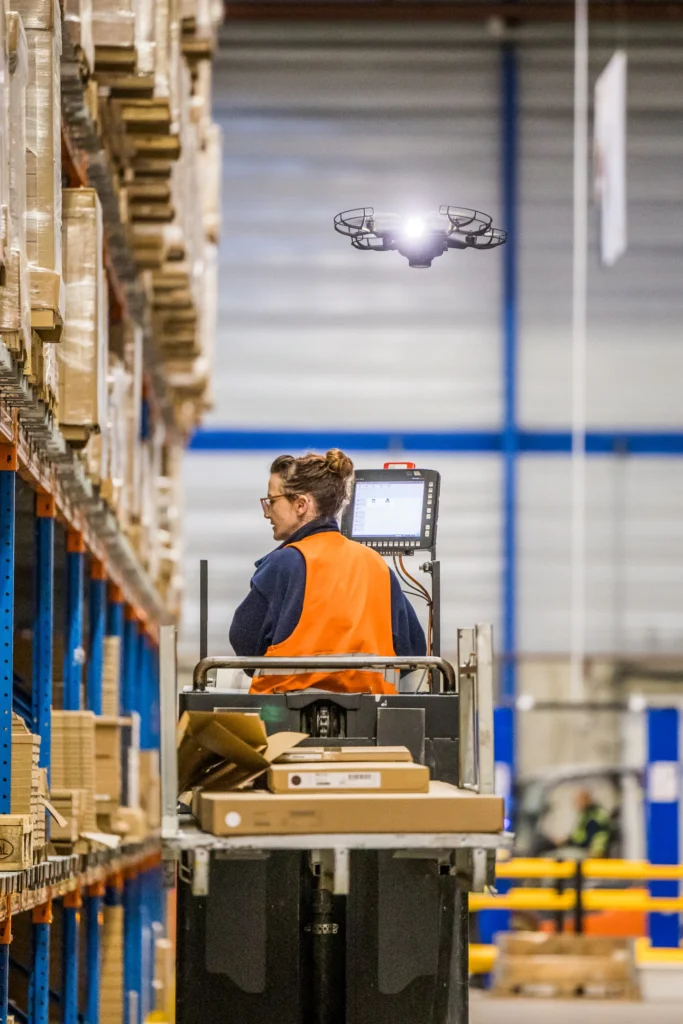
(Ingka Group)
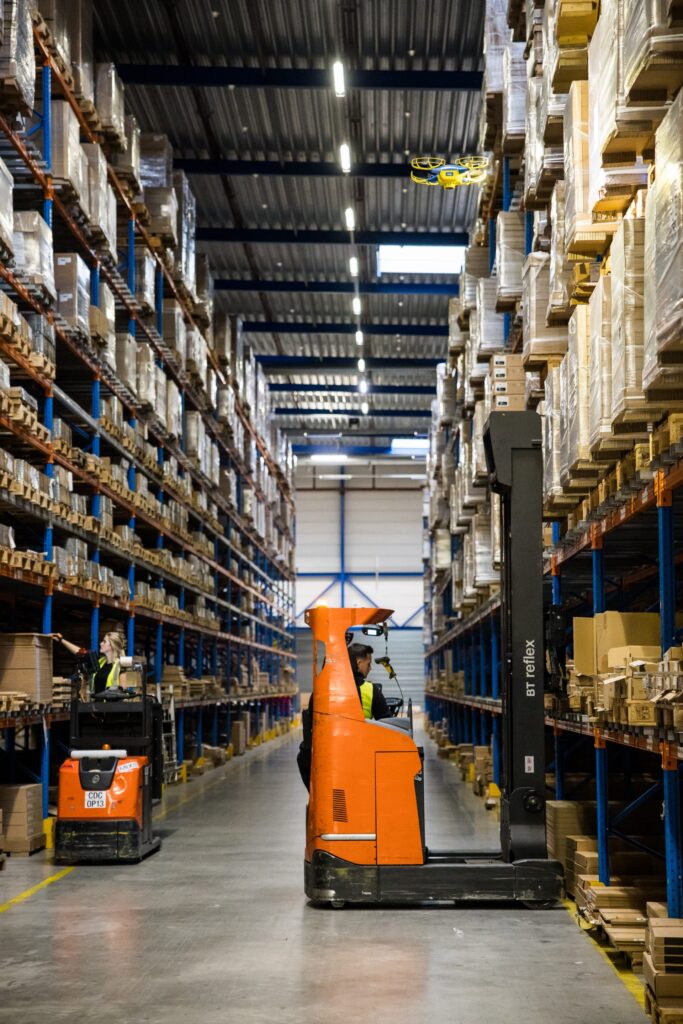
(Ingka Group)
This collaboration between humans and machines is a testament to IKEA’s forward-thinking approach to workplace design, where technology creates a more ergonomic and supportive environment for its employees. According to reports, such as those highlighted by The New York Times, warehouse automation through drones also mitigates the risks associated with repetitive strain injuries, which are common in logistics and fulfilment operations. This reduction in physical strain not only improves the long-term health of employees but also decreases the likelihood of workplace injuries, contributing to a safer work environment.+
Privacy and safety concerns
As with any technological advancement, the implementation of AI-powered drones raises questions about privacy and safety. IKEA has been proactive in addressing these concerns by ensuring that the drone technology complies with all relevant data privacy regulations. The AI system is designed with stringent safety features to prevent accidents and protect both the employees and the integrity of the inventory. The drones are programmed to operate within predefined zones and follow scheduled flight paths, minimizing the risk of unexpected incidents. Furthermore, the drone data is handled with the utmost care, ensuring that employee privacy is maintained. IKEA’s commitment to safety is evident in its cautious approach to rolling out this technology, prioritizing the well-being of its workers and the security of its operations.
The future of AI in IKEA’s operations
The deployment of AI-powered drones is just one step in IKEA’s broader strategy to leverage technology for operational excellence. As the company continues to refine this technology, it plans to introduce new functionalities, such as unit load monitoring and rack inspection capabilities. These enhancements will further improve the precision and efficiency of inventory management, solidifying IKEA’s position as a leader in retail innovation. Moreover, the insights generated by the drones’ real-time data collection are set to enhance IKEA’s analytics capabilities. By integrating this data into its broader logistics and supply chain management systems, IKEA can better understand its operations, enabling more informed decision-making and strategic planning.

